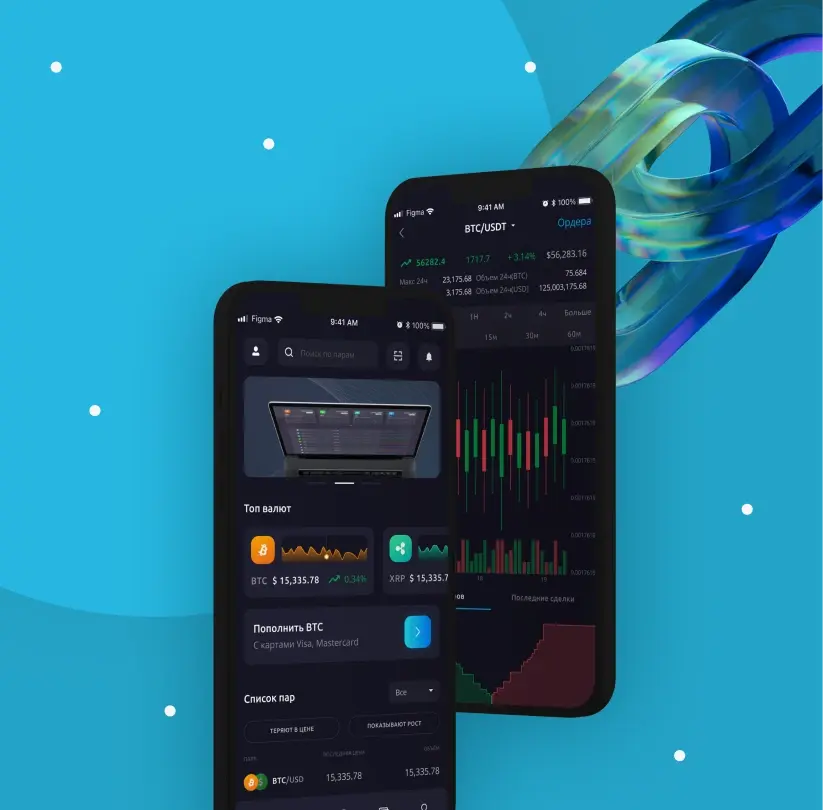In the continuously evolving landscape of fintech, 2025 will be a transformative year. This article explores the top 15 latest trends in fintech industry to watch. We will reveal insights into how innovation, digitalization, and a quest for efficiency are reshaping finance.
From artificial intelligence and blockchain integration to the rise of decentralized finances and enhanced financial inclusivity, these trends promise to redefine money management and investment, offering exciting possibilities for consumers and industry professionals alike. These latest fintech trends also include gamification, IoT (Internet of Things), microservices, and others.
The driving forces behind fintech innovation
The financial technology industry is one of the fastest-evolving sectors today. From advanced technology to shifting consumer preferences – let’s dive into what’s driving growth for this sector.
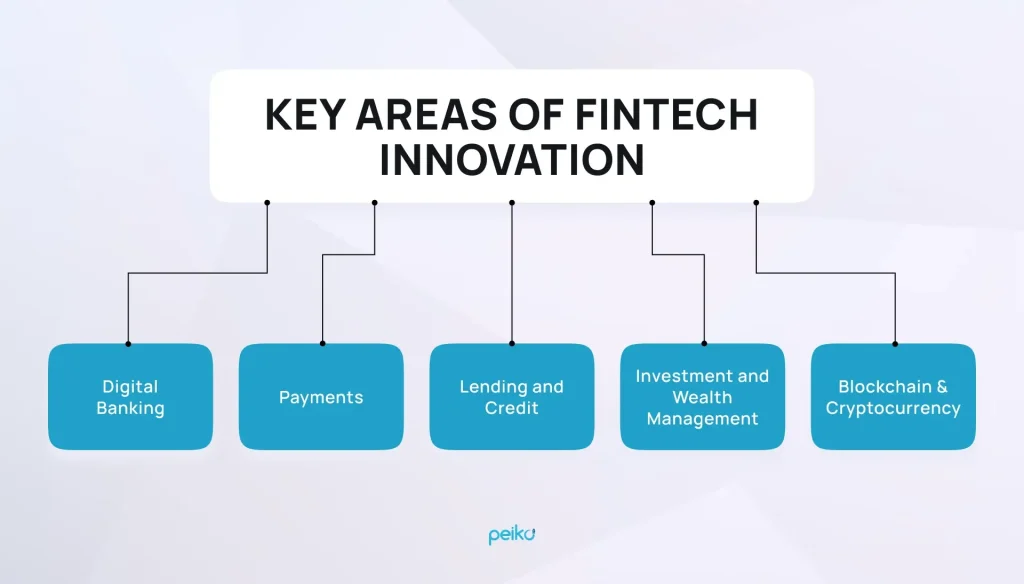
Technological advancements (AI, blockchain, IoT)
At the heart of fintech innovation is, of course, technology. AI (artificial intelligence) enables financial companies to further personalize their offerings by processing massive amounts of information quickly. Blockchain enhances transaction security and transparency, plus opens up routes toward DeFi.
The IoT (Internet of Things) embeds finance into everyday objects, making it seamless and sometimes invisible, with payments coming from your phone or smartwatch.
Regulatory changes and compliance trends
As the growth in fintech increases, the updating of regulatory frameworks has become necessary to keep the sector secure and trustworthy. New technologies, such as crypto, and the growing need for AML (anti-money laundering) regulations, have made it mandatory for governments to change.
Consumer demand for digital financial solutions
The digital payments arena is poised for exponential expansion, with a projected user base of approximately 5.48 billion individuals expected to be achieved by the year 2027. But today’s customers have more expectations from financial services: that they should be digital-first, fast, safe, and easy to use.
Growth of fintech startups and investment trends
Fintech startups are blooming in 2026, and investors just want to get on board. The worldwide fintech industry is anticipated to soar to a staggering $324 billion by this year. Growth is fueled by increasing mobile banking adoption, growing confidence in digital finance, and the drive toward underbanked populations with banking solutions.
Top fintech trends in 2025
Transformations, from the maturation of DeFi to the pervasive influence of AI, will not merely reshape financial services for consumers but also unveil a tapestry of new opportunities. So, what are the current trends in fintech?
1. Open banking
According to Statista’s projections, the value of open banking transactions is expected to reach 330 billion U.S. dollars in 2027. The number sounds impressive. But what does open banking mean exactly?
Open banking centers its focus on the controlled exchange of financial information, empowering account holders to share their financial data with unconventional financial institutions securely.
Through accessible APIs (application programming interfaces), third-party providers gain access to clients’ financial information. It is a resource frequently utilized by various fintech enterprises offering services such as budgeting, expense tracking, financial planning, and lending.
Thanks to the proliferation of open banking apps, account holders now reap the rewards of receiving routine reports. They detail their account balances, expenditures, and accumulated savings.
2. Artificial intelligence and ML
The worldwide AI software in the fintech market is poised to achieve a staggering milestone. The projections indicate its valuation of $26.67 billion by the year 2026. Remarkably, more than 90% of fintech enterprises worldwide have already deeply integrated AI and ML into their operations.
With its multifaceted capabilities, AI can proficiently manage client data and offer astute recommendations for financial management strategies. Also, AI can identify human errors and maintain stringent control over the quality of banking operations.
A notable example of AI’s integration into the fintech sector can be observed in the partnership between UBS Group, a global financial powerhouse, and a Singapore-based fintech company specializing in AI-driven banking assistants.
UBS Group spearheaded the development of a premium service tailored for VIP clients. This company provides clients with intelligent insights and forecasts of their income and expenses.
Machine learning (ML) is also among the latest fintech trends, driving personalized services and efficient risk management. Also, ML provides algorithmic trading, AI-powered customer support, and innovative credit scoring. Furthermore, machine learning enhances regulatory compliance, cybersecurity, and predictive analytics.
3. DeFi (decentralized finance) & DLT (distributed ledger technology)
Distributed ledger technology (DLT) is a sophisticated digital system that enables multiple computers or nodes to maintain a tamper-resistant and transparent ledger of transactions collaboratively. This technology, often associated with blockchain, offers decentralization and immutability. DLT relies on consensus among participants to ensure the security and accuracy of recorded data.
But how are DeFi and DLT connected? DeFi is a specific use case of financial services that operates on DLT, particularly blockchain technology.
DeFi encompasses an array of decentralized financial products that operate autonomously, devoid of central authority intervention. These encompass a spectrum of financial services, including loans, exchanges, payment applications, and more.
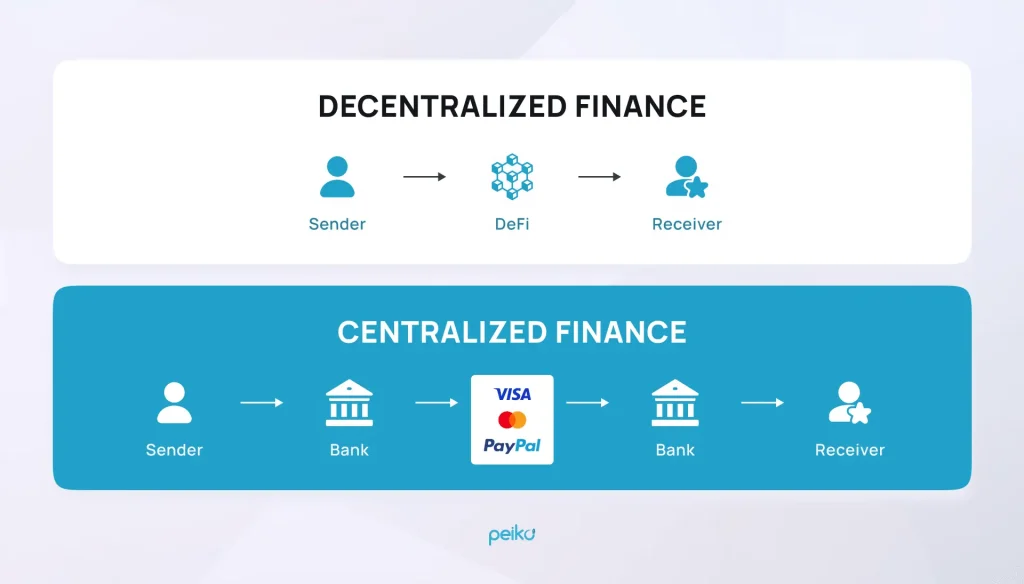
At its core, DeFi relies on self-executing smart contracts for all operational facets and embraces an open-source philosophy. This inspires confidence in users. In general, this openness facilitates seamless interactions between multiple blockchains, expanding the cryptocurrency industry’s accessibility to a broader demographic.
Some of the popular DeFi solutions include Frax Finance, Morpho, Nexus Mutual, and ParaSpace.
4. Blockchain (especially stablecoins)
Let’s consider the prominent use cases of the blockchain in fintech trend that was a popular one of the 2024 trends and will remain on top in 2025:
Stablecoins’ ascendance
Stablecoins combine the virtues of other cryptocurrencies – speed, security, and borderless transactions. But with price stability, stablecoins emerge as a preferred choice for everyday transactions and cross-border remittances. They also will remain a reliable value store.
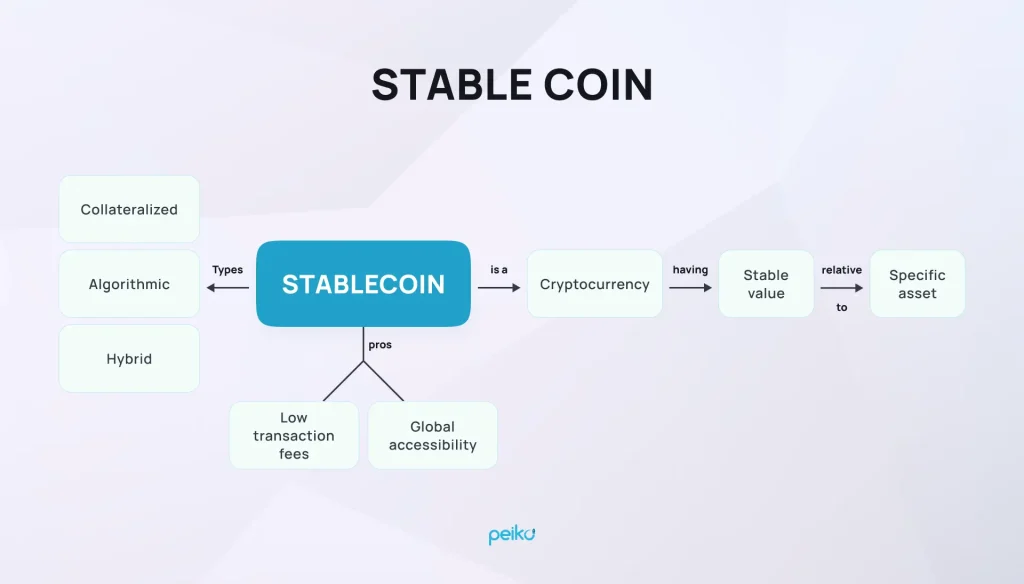
Central bank digital currencies (CBDCs) and regulatory clarity
CBDCs will assume a pivotal role among fintech trends 2025. Central banks across the globe envision government-backed digital alternatives (digital euro, digital dollar) to physical cash. This exploration brings much-needed regulatory clarity to the cryptocurrency arena.
NFTs beyond the canvas
Non-fungible tokens (NFTs) are celebrated initially for their role in digital collectibles and art. Beyond the confines of art, NFTs find apps for tokenizing tangible assets. This includes real estate, intellectual property, and even personal identities.
Interoperability and cross-chain synergy
Interoperability looms large as a critical theme. Solutions facilitating harmonious communication and data exchange between diverse blockchain networks proliferate. These solutions empower assets and data to traverse the boundaries of different blockchains seamlessly.
Blockchain technology is one of the best fintech technology trends that will cover an array of industries, fostering innovation and adoption on a broader scale.

5. BNPL (buy now, pay later)
Stepping into the year 2025, the buy now, pay later (BNPL) trend in the world of finance stands as a formidable force, displaying unwavering vitality and readiness for further evolution.
BNPL has already reshaped how people make purchases and is gearing up for continued growth and innovation. It’s no longer confined to the realms of traditional retail and e-commerce. Instead, it’s branching into diverse sectors such as travel, healthcare, and automotive. This expansion aims to elevate customer experiences and stimulate sales across various industries.
The user experience takes center stage for BNPL providers. They’re investing in streamlining app processes, ensuring transparent terms and conditions, and delivering personalized recommendations tailored to individual preferences and financial behaviors.
Moreover, BNPL services are weaving into the broader fabric of financial ecosystems. The BNLP trend offers users access through various channels, from banking apps to e-wallets, seamlessly embedding into their financial routines.
6. Biometric authentication
One of the most significant fintech trends 2025 on the horizon is the evolution of biometric authentication. This technology, which relies on unique physical and behavioral traits to verify individuals, is set to play a pivotal role in securing financial transactions and enhancing user experiences.
In the future, biometric authentication will go beyond fingerprints and facial recognition. It encompasses a broader spectrum of biometric markers, including voice recognition, iris scans, and even behavioral biometrics like keystroke dynamics and gait analysis. This multifaceted approach fortifies security and enables a seamless user experience.
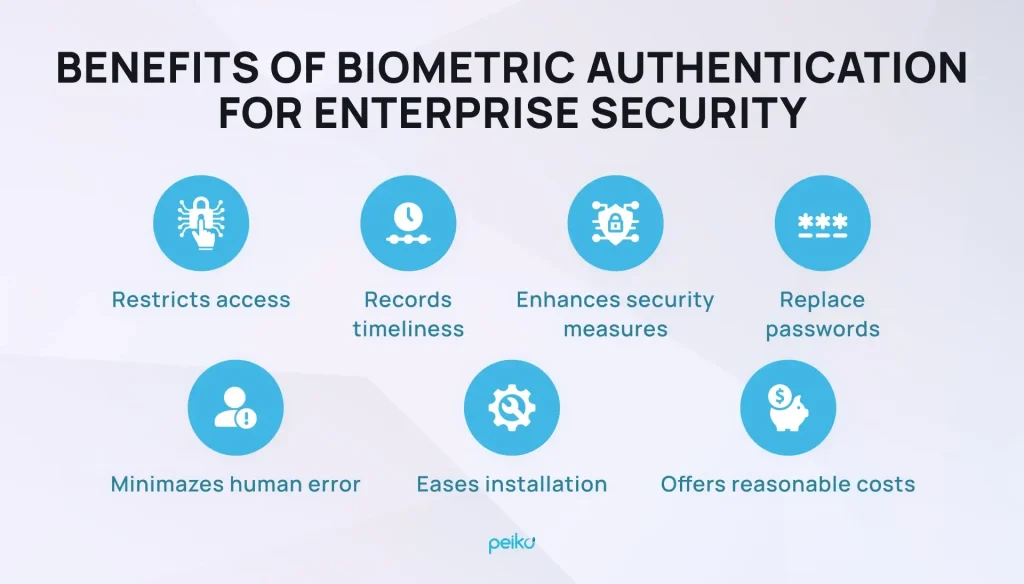
The finance industry in 2025 will witness widespread adoption of biometric authentication, both in mobile banking apps and for in-person transactions. Users can expect to access their accounts, make payments, and authorize transactions with a simple glance or touch.
7. Gamification
The financial industry in 2025 will undergo a profound transformation by integrating gamification principles. As per Mordor Intelligence, projections indicate that the gamification market is poised for a remarkable 350% expansion by the conclusion of 2026 when compared to data from 2020.
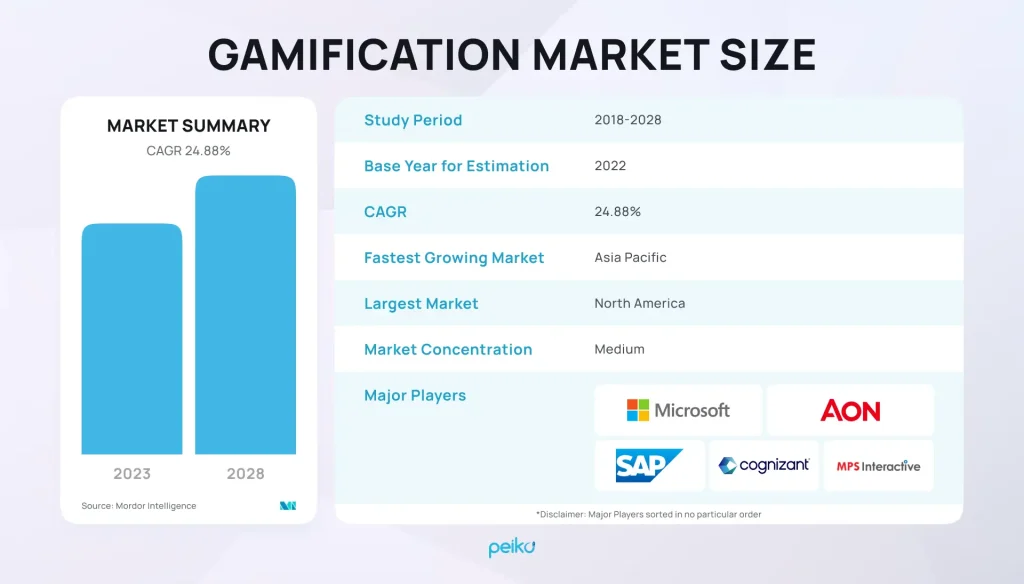
Beyond traditional banking, gamification becomes a core strategy for engaging users, enhancing financial literacy, and promoting responsible financial behaviors.
In this landscape, financial apps and platforms leverage gamified elements to make financial management more intuitive and enjoyable. Users are encouraged to set and achieve financial goals through interactive challenges and rewards systems. Saving, investing, and budgeting become engaging activities rather than burdensome tasks. Education also takes center stage in the gamified fintech world of 2025.
8. Internet of Things
In this connected world, IoT devices play a pivotal role in simplifying everyday financial transactions. Smart wearables, such as watches and rings, facilitate contactless payments. Thus, such devices eliminate the need for physical cards or smartphones.
As reported by Statista, the global count of IoT-connected devices is anticipated to surge from 8.6 billion in 2019 to a substantial 29.42 billion by the year 2030.

IoT-enabled vehicles seamlessly handle toll payments, parking fees, and even insurance premiums, transforming how people interact with their finances on the go.
Moreover, IoT-driven data analytics empower financial institutions to understand customer behaviors better. These insights enable personalized financial recommendations, from tailored investment strategies to optimized budgeting plans. Such a degree of personalization enriches user interactions and nurtures financial stability.
9. Embedded finance
Embedded finance redefines the boundaries of traditional banking by integrating financial services into diverse non-financial apps and platforms. Some typical instances of this trend encompass in-app financial transactions, person-to-person lending arrangements, and the realm of micro-insurance.
This trend allows individuals to access financial services seamlessly within their daily routines. For example, while shopping online, consumers can apply for point-of-sale loans or access personalized savings and investment options directly from e-commerce platforms.
In general, embedded finance partnerships become commonplace. Embedded finance is a big trend for the B2B (business-to-business) transaction model. Fintech firms collaborate with non-financial entities, including retailers, tech companies, and even healthcare providers. These partnerships enable the establishment of innovative financial services and products that cater to users’ specific needs.
E-commerce platforms could extend working capital loans to their network of merchant collaborators. At the same time, software enterprises may seamlessly integrate payment processing capabilities within their apps. So, don’t underestimate this one of the B2B fintech trends 2025.
10. Green fintech
Green fintech initiatives will gain momentum in 2025. They aim to align financial services with eco-conscious values. Investments in renewable energy projects, sustainable agriculture, and environmentally responsible businesses become increasingly accessible through fintech platforms. ESG (environmental, social, and governance) investing takes center stage, with investors prioritizing companies that demonstrate commitment to sustainability.
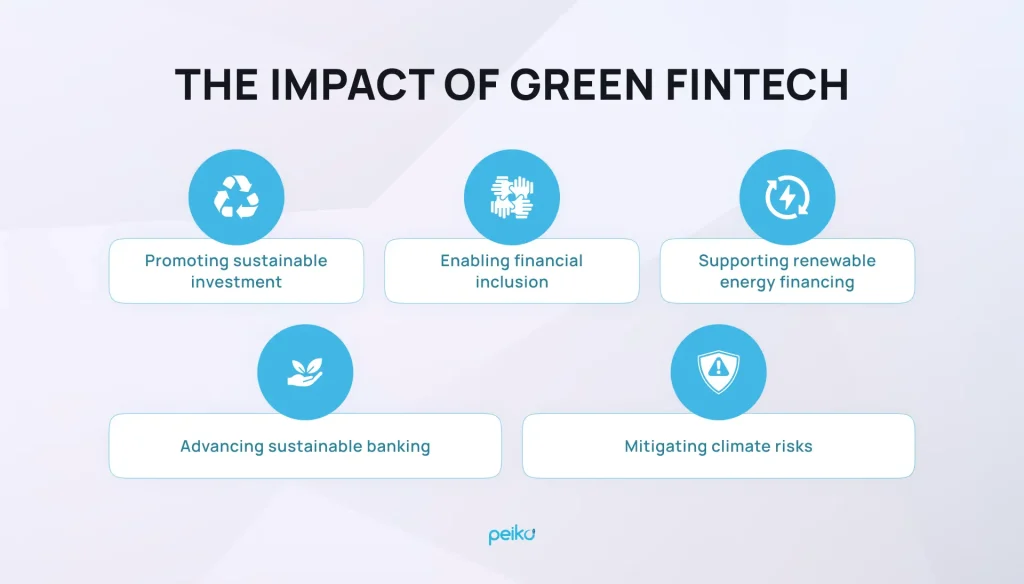
Financial institutions in 2025 will actively incorporate green principles into their operations. They adopt eco-friendly banking practices, invest in green technologies, and lower carbon footprints. Digital banking platforms provide tools and insights to help users make environmentally conscious financial decisions. For example, users can choose green investments and track their carbon impact.
11. Neobanks
Neobanks are a specific category of fintech companies that are committed to lowering the overall banking services’ cost. While they may offer fewer service categories compared to their larger banking counterparts, their unwavering commitment lies in elevating the quality of these services.
According to Statista, the number of individuals holding at least one account with a neobank is projected to surge, reaching a pinnacle of 39.1 million in 2025. It is a substantial leap from the 20 million recorded in 2021. This growth indicates the increasing importance of online banking access, especially when remote work has become a critical aspect of many businesses.
Features like instant transfers, swift registration, and the provision of IBAN (International Bank Account Number) and ACH (Automated Clearing House) accounts underscore the substantial advantages offered by neobanks. These features facilitate seamless and fully online banking experiences.
Chime, one of the largest neobanks in the United States, caters to over 13 million active users seeking personal banking solutions. With its user-friendly mobile banking app, Chime empowers individuals to access funds from direct deposits up to two days earlier than traditional methods would allow.

12. Virtual bank cards
These digital representations of payment cards are one of the current fintech trends. By the way, according to Future Market Insights, the virtual cards market is projected to reach $1.3 trillion by 2032. Quite impressive, right?
Virtual bank cards, while mirroring the functionality of traditional physical cards, offer unparalleled flexibility and security. They can be generated, managed, and used entirely within digital banking applications and mobile wallets.
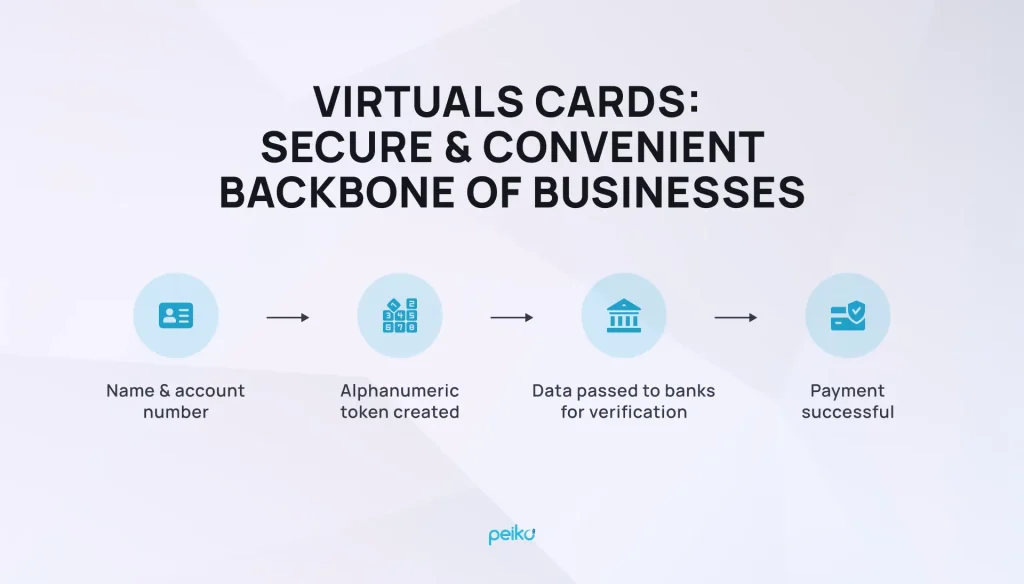
Virtual cards have many benefits for users. Individuals can create temporary virtual cards for one-time purchases, enhancing security by limiting exposure to fraud.
The versatility of virtual bank cards extends to budgeting and expense tracking. Users can create multiple virtual cards, each dedicated to specific spending categories. This level of control facilitates finer financial management, simplifying the tracking and regulation of expenses.
13. Proptech
The emergence of the proptech trend among current fintech trends redefines how individuals buy, sell, rent, and manage real estate by integrating cutting-edge technology and digital solutions.
Proptech platforms empower users to explore real estate opportunities with unprecedented ease and transparency. Virtual property tours, powered by augmented and virtual reality, enable prospective buyers and renters to explore properties without the need to leave their homes. This not only increases convenience but also reduces the need for physical site visits.
Smart contracts, facilitated by blockchain technology, streamline property transactions. They automate complex processes such as title transfers, rental agreements, and escrow management. This reduces the need for intermediaries and expedites the closing process.
Moreover, proptech platforms provide data-driven insights for investors, enabling them to make informed decisions about property investments.
14. Regtech
This is another one among the fintech industry trends. Statistics say the regtech market will grow from $6.3 billion in 2020 to $19.5 billion by 2025. But what does the regtech exactly mean?
Regtech is the management of regulatory processes using technology, typically in the financial industry. Its main functions comprise monitoring, reporting, and compliance. Regtech consists of a group of ventures that use cloud computing technologies to assist businesses in complying with regulatory requirements.
Regtech solutions in 2025 harness the power of AI and machine learning to automate regulatory compliance tasks. These intelligent systems scan vast volumes of financial data in real time, identifying potential compliance issues and anomalies with unprecedented speed and accuracy.
Regtech solutions leverage biometric authentication and digital identity verification to enhance Know Your Customer (KYC) processes. This not only fortifies security but also expedites customer onboarding.
15. Microservices and modularity
Microservices architecture breaks down complex fintech systems into smaller, modular components. Each of these components is responsible for a certain function. These microservices can be developed, deployed, and maintained independently, enhancing flexibility and scalability.
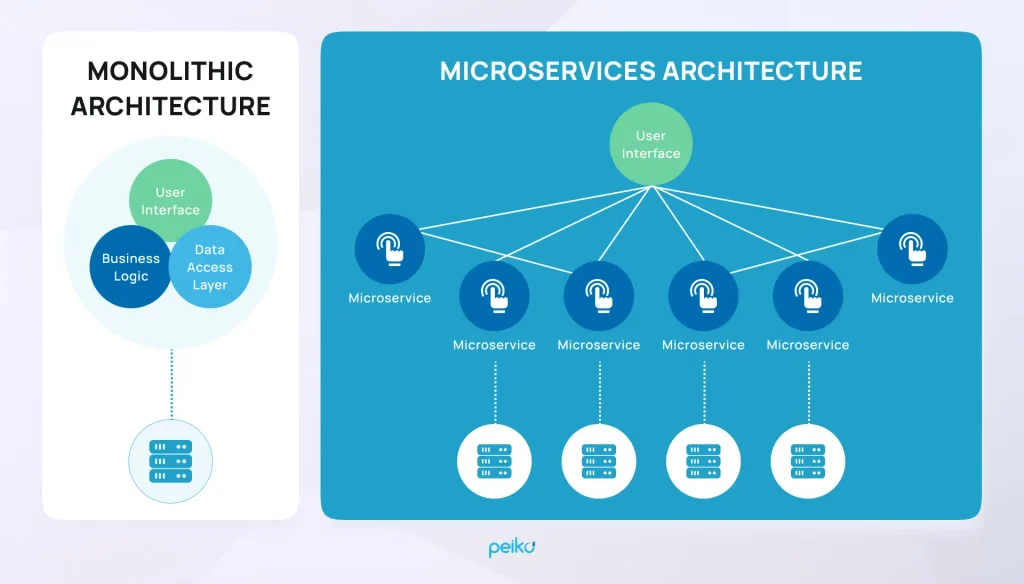
In 2025, fintech platforms will leverage microservices to accelerate innovation and adapt to changing market dynamics.
Modularity goes hand in hand with microservices, enabling fintech platforms to assemble and integrate functionalities as needed. This modular approach allows fintech providers to respond swiftly to user demands.
Furthermore, microservices and modularity enhance fault tolerance and resilience. In the event of a component failure, the system can continue to function, providing uninterrupted services to users. This robustness is critical in the highly competitive fintech landscape of 2025.

It’s essential to recognize that the relevance of fintech trends 2025 highlights can fluctuate significantly in 2025. This is based on regional disparities and prevailing market conditions.
But sometimes it is challenging not only to decide the direction for business but which technologies to use for a certain project. For example, the dilemma can be Node.js vs Django. Luckily, we can help close all your questions.
Peiko is your reliable partner for implementing fintech ideas
In the financial technology world, the Peiko company stands out with its expertise in harnessing the latest trends in fintech to revolutionize software development. Let’s delve into one of Peiko’s remarkable fintech cases.
Dipper
It is a modern crowdfunding platform. We designed Dipper in such a way to provide superior crowdfunding: fast, secure, and really reliable. An open investment tool offered by Dipper affords opportunities of prudent risk management and seamless interactions between the involved parties.
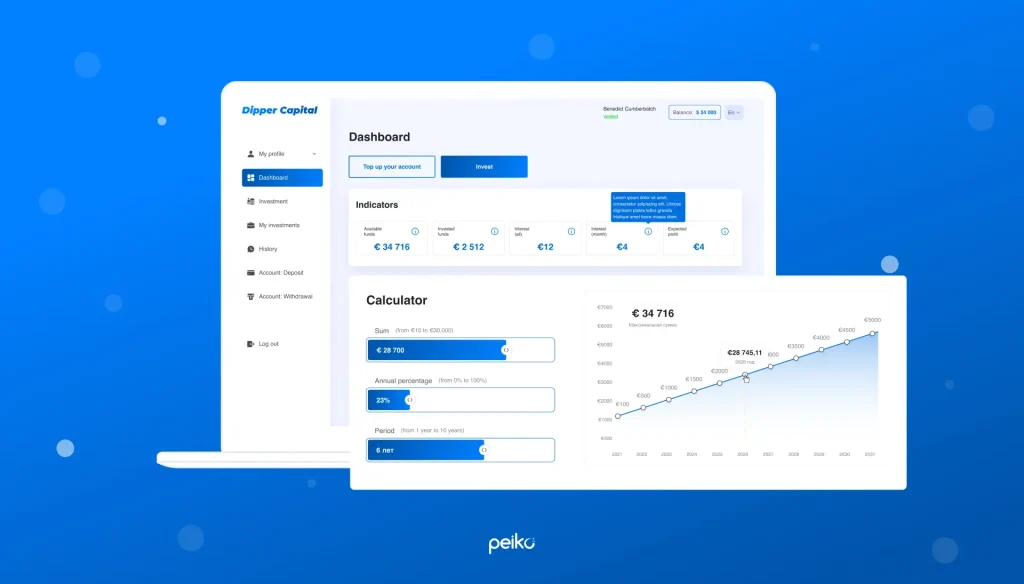
Main features we implemented
- Robust investing management system: The Dipper platform has a very powerful investment and transaction tracking system in real time. For this reason, users gain important insights. These insights can help them make the right decisions at the right time in order to stay on top of their financial goals.
- Fast identity verification and top security: Protecting the users required us to build an automated identity verification system, along with two-factor authentication, in a safe and secure environment for all parties involved.
- Convenient admin panel and content management: We implemented a robust admin panel that delivers ease to user management and content publishing. It also offers administrative ease with platform operations, maintaining a smooth experience across all kinds of users.
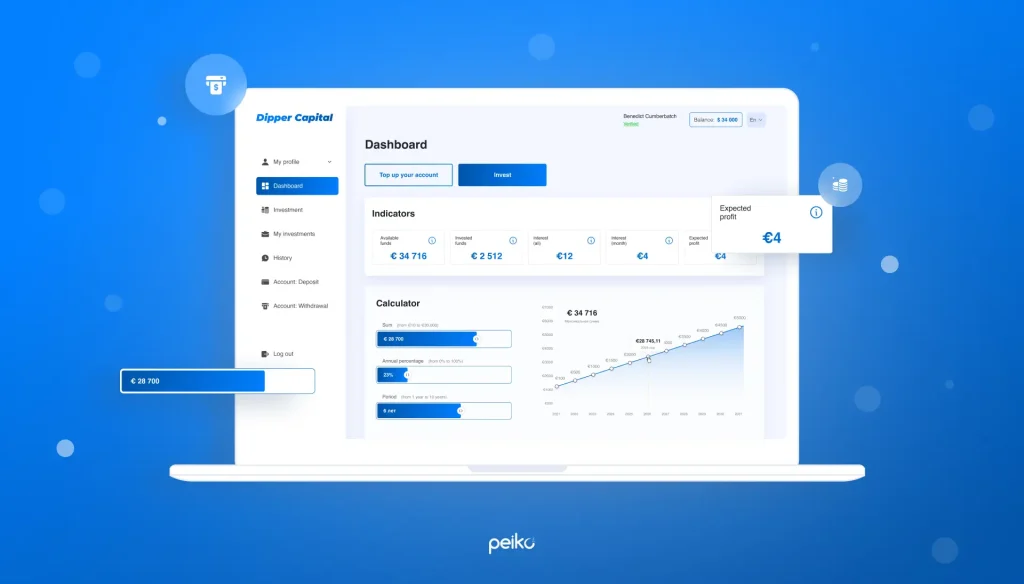
At Peiko, we know how to build top-quality fintech projects like Dipper or Myfinance, following current trends in fintech. If you are ready to share your burning ideas with us, we will help you with all the development.
Conclusion: get into fintech
The future of the fintech sector undeniably brims with promise. We can wait for the rise of online banking, DeFi solutions, AI-based apps, and more.
In this ever-evolving landscape, fintech firms and the providers of fintech app development services that adeptly navigate these transformations while prioritizing consumer needs are primed for triumphs.
If you decide to build a fintech start-up, we are here to guide you along this path. Contact us today, and we will help you turn your ideas into life!






